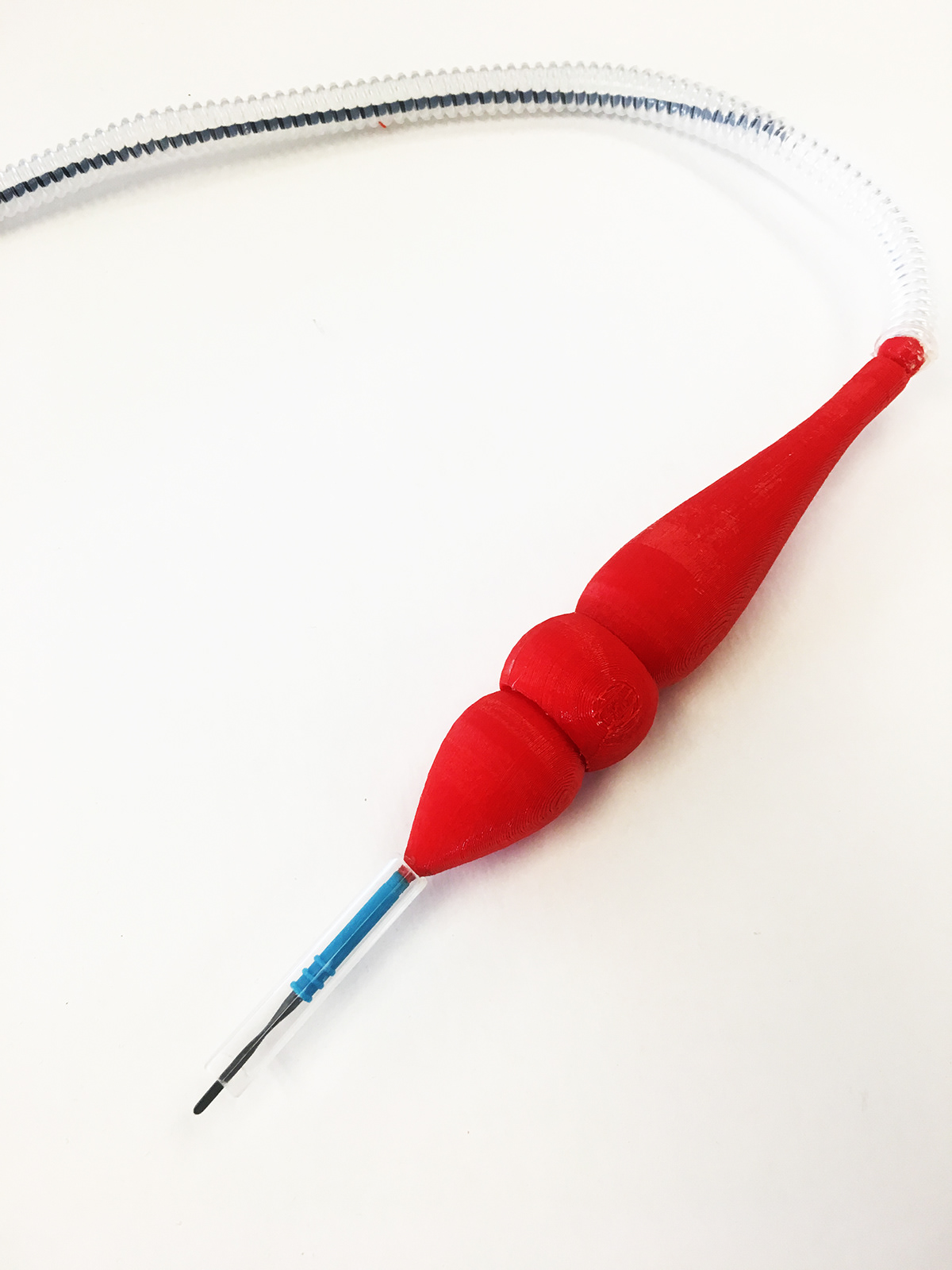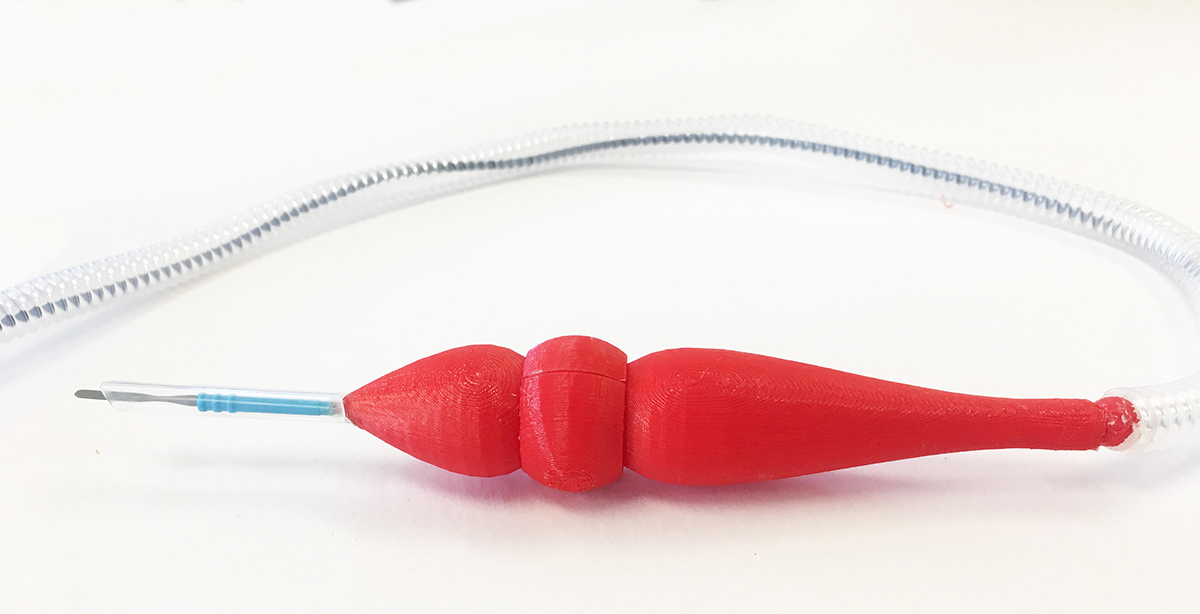
For our Design+Health course between RISD and Brown University, my team and I observed many surgeries and interviewed surgeons at different skill levels to learn about how to improve the experience of using a bovie, an electro-surgery tool used during surgery to cut through tissue and seal off blood vessels to minimize bleeding.
Electrosurgical units (ESU's) are incredibly pervasive devices used in nearly every surgical specialty and in more than 100 million surgeries worldwide. Currently, the experience of using an ESU is full of compromises with regards to the grip ergonomics, tubing management, and intuitive ease-of-use, leading to issues with user comfort and precision. The smoke evacuator, a tube that is attached to the bovie to vacuum smoke away from the body, also poses a problem of blocking the view of the electrode tip which allows for cauterization.
The ESU pencil requires a learning curve in understanding pressure control and haptic feedback, making it more likely for inexperienced residents to go “past-point,” i.e. cauterize where it’s not necessary. Therefore, we decided to focus our redesign of the Bovie towards surgical residents and their needs.

To redesign the bovie, we began by testing various grips and switch mechanisms with clay models. We decided on a thick, bulbous grip with a retractable, rotating switch for surgeons to easily switch between cut, coagulate, and neutral. The previous bovie model we studied required surgeons to press and hold a button to cut or coagulate, which resulted in less precise movements as a lot of strain was put onto the finger holding down the buttons. The new switch requires significantly less strength and strain on the hand to change modes.
Alongside cutting and coagulating, the electrode tip would also measure the resistance of the cut area to determine the type of tissue it was going through and it would announce it through the operating room's PA system. We decided on an audible interface instead of a visual display so that the surgeon can focus on looking at the tissue and not on reading a display. Although this may not be as useful for seasoned surgeons, it could help prevent residents from going past point, which is the act of cutting further than required.


We 3D printed different versions on the initial clay pen and decided to further iterate on the curvier model because we found that the added weight at the portion closest to the point of contact with the users hand was more comfortable and allowed for better cord management and control. We added a ball-and-socket joint at the end of the pen for the tubing to rotate at its axis. The bulbous, weighted areas allows the pen to comfortably rest on the surgeons hand to help counteract the weight from the smoke evacuator tubing that would pull the pen backwards otherwise.


Through our observations, we also found that the bovie holder that came with the bovie was poorly designed, as it was flimsy and meant to hang on the IV pull which is always too far from the operating table to actually be used to hold the bovie. We decided to add table clamps to the holder to allow the bovie to be kept closer to the operation site. We also added a small tension hole at the bottom of the holder in which the tubing could go through and the surgeon could adjust the amount of tubing that exits the hole to prevent the excess tubing from pulling on the bovie during the operation.



